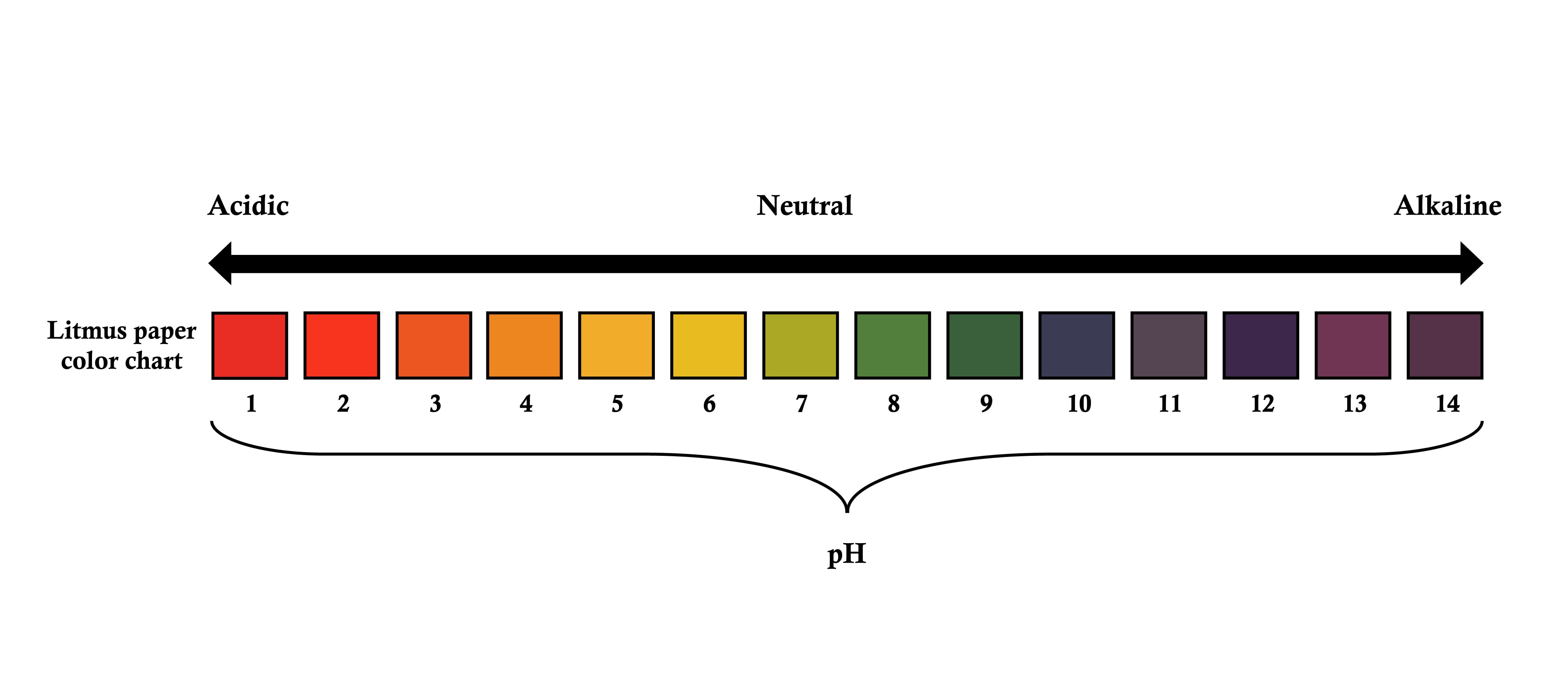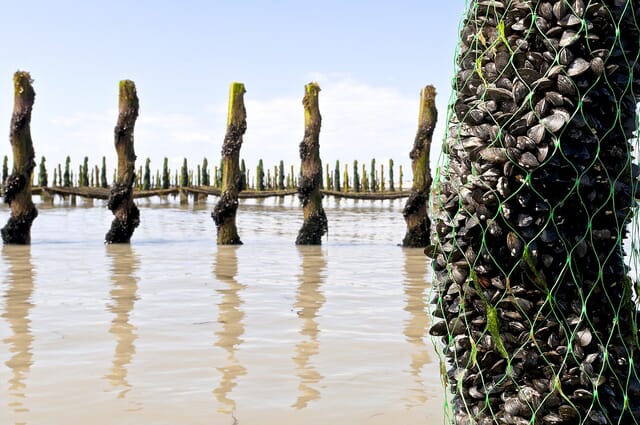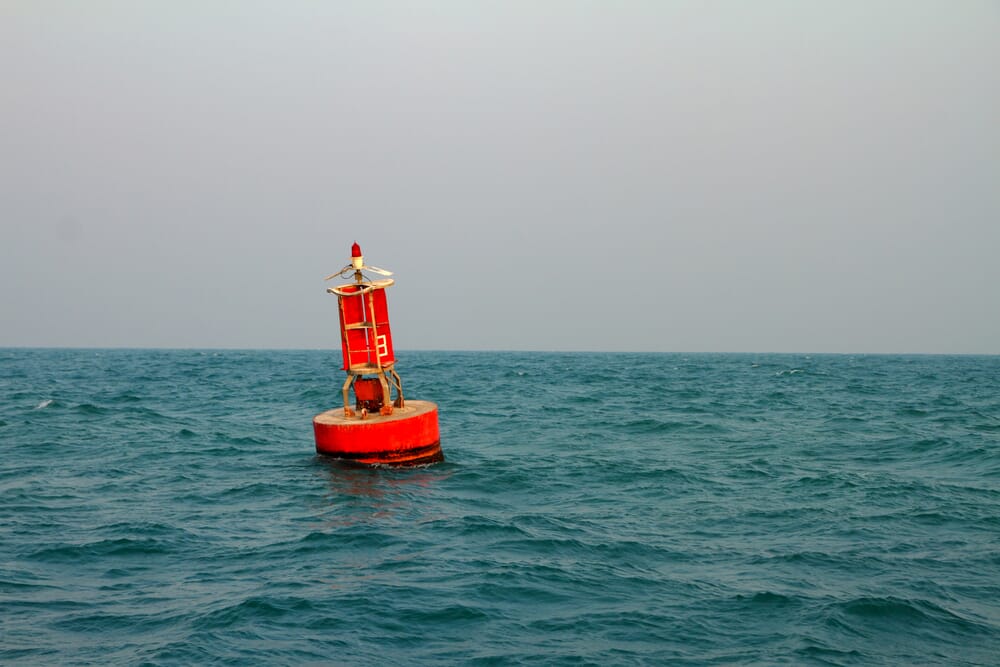The aquaculture industries that are particularly affected are the ones that specialise in farming shellfish such as such as mussels, oysters, scallops, clams, crabs and lobsters, with some having reported losing up to 95 per cent of their stock.
The cause of the rising acidity levels in the water is thought to be from pollution, in particular the burning of fossil fuels used in heavy industry. Since the start of the industrial revolution, the amount of carbon dioxide in the atmosphere has steadily increased to its highest level yet, around 380 parts per billion, with the effects now showing in coastal waters.

The surface of the oceans and seas mix with and absorb carbon dioxide from the air, and the more that gets absorbed, the more acidic the water becomes. The acidity of the water can be measured using the pH scale which ranges from 0-14.
Lower measurements on the scale mean a higher level of acidity in the water. The pH value of the sea water has remained steady for many years, but now research shows that there has been a sudden drop in pH levels.
Measurements taken from Vancouver Harbour in Canada show a pH value of 8.1 from 1954 through to 1974. More recently this has dropped to around 8.0, which is a significant amount in the natural fluctuation of the levels. One recording in 2001 showed a dramatically decline to a pH value of 7.3.
This change from what was once steady pH levels is causing havoc for marine life. The water of the seas and oceans now show a 30 per cent increase in acidity since the beginning of the industrial revolution.
By the end of the century it is predicted that levels of acidity in the oceans will have a pH value of around 7.8 on average, and this will bring with it some serious effects for the aquaculture industry.
Effects on Shellfish Growth
Acidic water is a particular problem for shellfish. When carbon dioxide mixes with sea water, it produces an acid that has a corrosive effect on the calcium that marine life needs to develop shells and to produce healthy bone growth. It makes it difficult for shellfish to grow a tough outer shell, which is essential for their health and survival.

Many of the shellfish in acidic water produce thin shells and do not develop properly, leaving them with poor immune systems and open to disease, particularly at the larvae stage. This has had a significant effect on marine life in Canada, with on-going problems for other marine creatures who rely on shellfish as part of the food chain.
Aquaculture businesses too are feeling the effects. Canada usually produces around 12,000 tonnes of oysters and 58 tonnes of scallops each year, worth millions of dollars to the economy. Many aquaculture companies rely on buying shellfish larvae, which they feed and grow and are sold for a profit once they reach the right size.
With the rise in the acidity of the water, many of these larvae do not survive and the huge decline in stock brings financial implications. Many companies have had to lay off staff and at the other end of the supply chain, businesses like seafood suppliers and restaurants now have to source shellfish from other parts of the world.
It is not just a financial effect that is being felt. The shellfish fisheries are usually run by locals or by families, and are associated with a rich heritage and culture. With the demise of the stock, it could mean that soon the ways and lifestyle of the shellfish farms and workers are also under threat, and this would cause a significant impact in coastal communities. Local scallops and oysters in Canada are, at the moment, becoming a thing of the past.
Increasing Acidity on US and Canada's West Coast
The tides of the vast Pacific Ocean along the west coast of Canada and America produces upwelling, which is water that rises to the surface after being deep below for many years. This water brings with it the levels of acidity that were caused by the waters mixing and absorbing the carbon dioxide from around 50 years ago. So the affects that are being felt now are from an era when carbon emissions were lower than what they are today.
With the carbon dioxide levels in the atmosphere now much higher, it paints a worrying picture for the acidity levels in future ocean upwelling.
Where the upwelling reaches the surface is where many of the aquaculture industries in the North West region are based. This is why the affects have been particularly significant there. Research also shows that colder water absorbs more carbon dioxide than water in warmer climates, again adding to the reasons why the aquaculture industry in the region has been so affected.

With the effects of coastal acidification in Canada becoming increasingly apparent, it is important to understand how it is affecting other parts of the world.
The National Oceanic and Atmospheric Administration (NOAA) is a US based scientific agency that focuses on monitoring the changes to the chemistry of the oceans. High levels of acidity have now been recorded by researchers 20 miles of the west coast of North America, which could have consequences for marine life right down to the coast of Mexico.
Mussel farming is an important industry along the west coast of America, and this too has seen the result of rising acid levels in the water and much of the developing larvae are not surviving.
The effects of the increase in ocean acidification are not limited to Canada and America, but are also being felt worldwide. Alaska too is seeing the impact. Famous for its salmon and crab, the south and south west of Alaska relies upon the fishing industry.
Increased acidification in the Bering Sea has led to a decline in the amount of smaller shellfish available, so that the salmon has a reduced food supply, resulting in smaller and fewer amounts of fish. The changes in the ecosystem of the water also has a negative effect on their reproduction.
For the Alaskan fishing communities, there is a sense that solutions need to be worked out before the risks to it increase. It is particularly important because in the south and south west of Alaska, other forms of employment are not readily available. This would lead to low incomes and unemployment on a large scale.
On the other side of the world, New Zealand is a significant producer and exporter of shellfish. Researchers and fishery workers are now carefully monitoring the pH levels in their waters due to the poorer growth and the decline in numbers of their shellfish in recent years.
The acidity levels in the oceans have become a global problem, and has now reached a critical point whereby it is difficult to recover. It is suggested that even if the carbon dioxide levels in the atmosphere dropped back to lower levels, the problems it has caused in oceans would have a significant effect on marine life for many years to come.
However, it is not just carbon dioxide that is to blame for the rise in the acidity levels of the water.
Agricultural waste, fertilisers, sewage and chemicals from water treatment facilities can also cause a rise in pH levels, as it causes a bloom in the amount of zooplankton and phytoplankton. This small animal and plant matter then decomposes, resulting in more carbon dioxide being mixed into the water, increasing the acidity.
Over the next 50 years, it is expected that many marine creatures will become extinct, as some species will not be able to adapt to the environment.
Solutions
For the aquaculture industry though, there are some solutions available that can be used to adjust the pH balance of the water used to farm shellfish. The daily monitoring of the water is essential in order to keep a healthy environment for shellfish larvae to grow. With rising acidity levels in the ocean being a major problem, research into it has government backing in many countries. Both farmers and scientific researchers around the globe are regularly testing the pH levels of coastal waters in an attempt to monitor and manage the acidity problem.

Offshore buoys provide real-time data and can detect cold, acidified water approaching the coast. This early warning system allows farmers to adjust the water intake pipes that run to the breeding tanks and hatcheries, before the acidic water enters and has a detrimental effect on the growing shellfish.
There is also the option to introduce filter systems that work to remove some of the acidity from the water, keeping a healthy pH balance flowing through the hatcheries. Another solution is to add sodium bicarbonate to the water when the acid levels are high. This works in the same way as an antacid tablet does for humans, but on a much larger scale. Water tanks that fisheries use can also be filled up later in the day when the acidity levels are at their lowest, and another solution is to plant fields of sea grass underwater to help reduce some of the carbon that is present in the water.
These quick fixes may be somewhat helpful in the day-to-day management of keeping a healthy water supply for some operations, but it all adds to the increasing cost involved in maintaining a healthy environment for shellfish to grow. With the oceans full of acidic water, it is clear that more solutions need to be worked out.
The problem of ocean acidification and its impact is one that is going to be a challenge for many years to come.
February 2015




